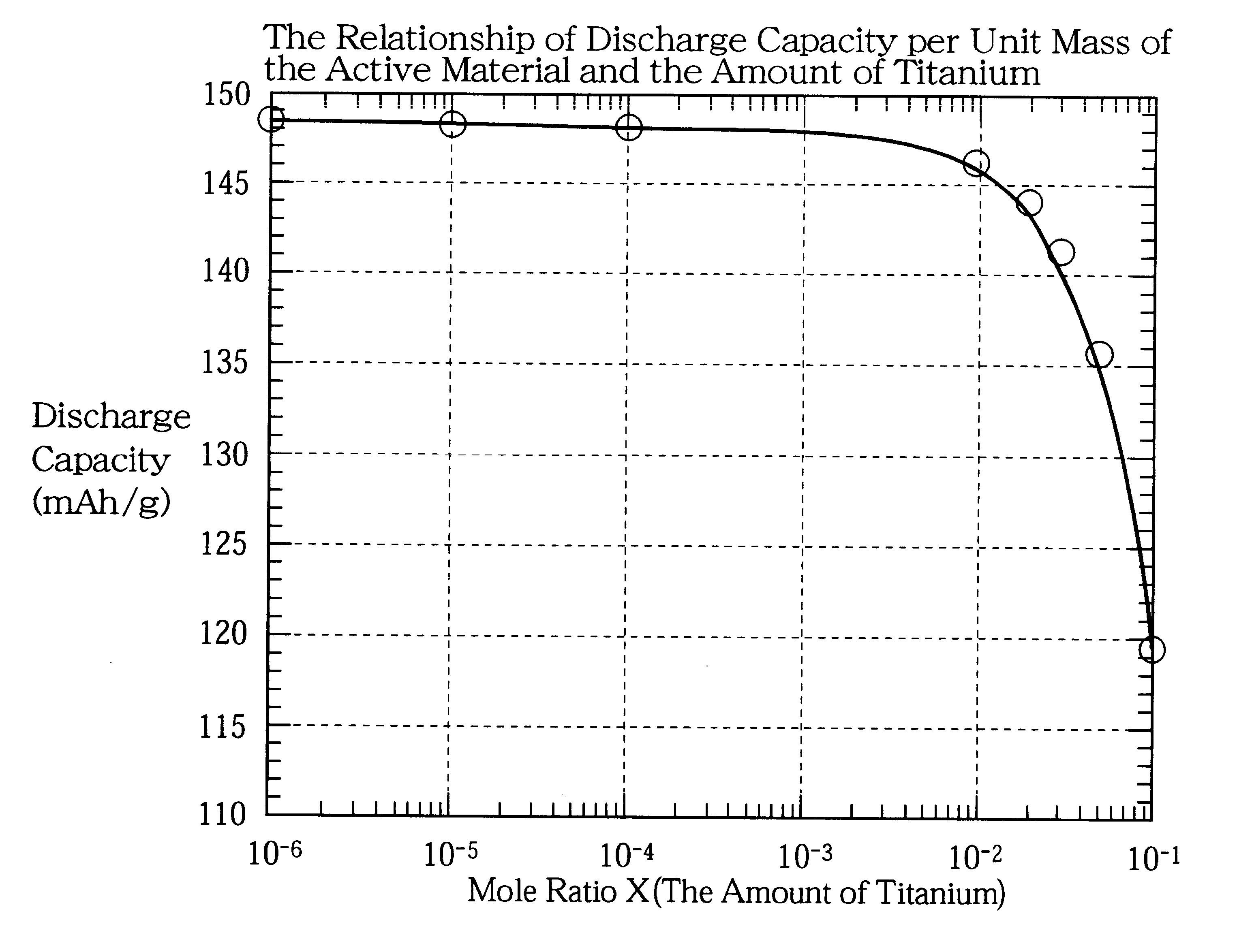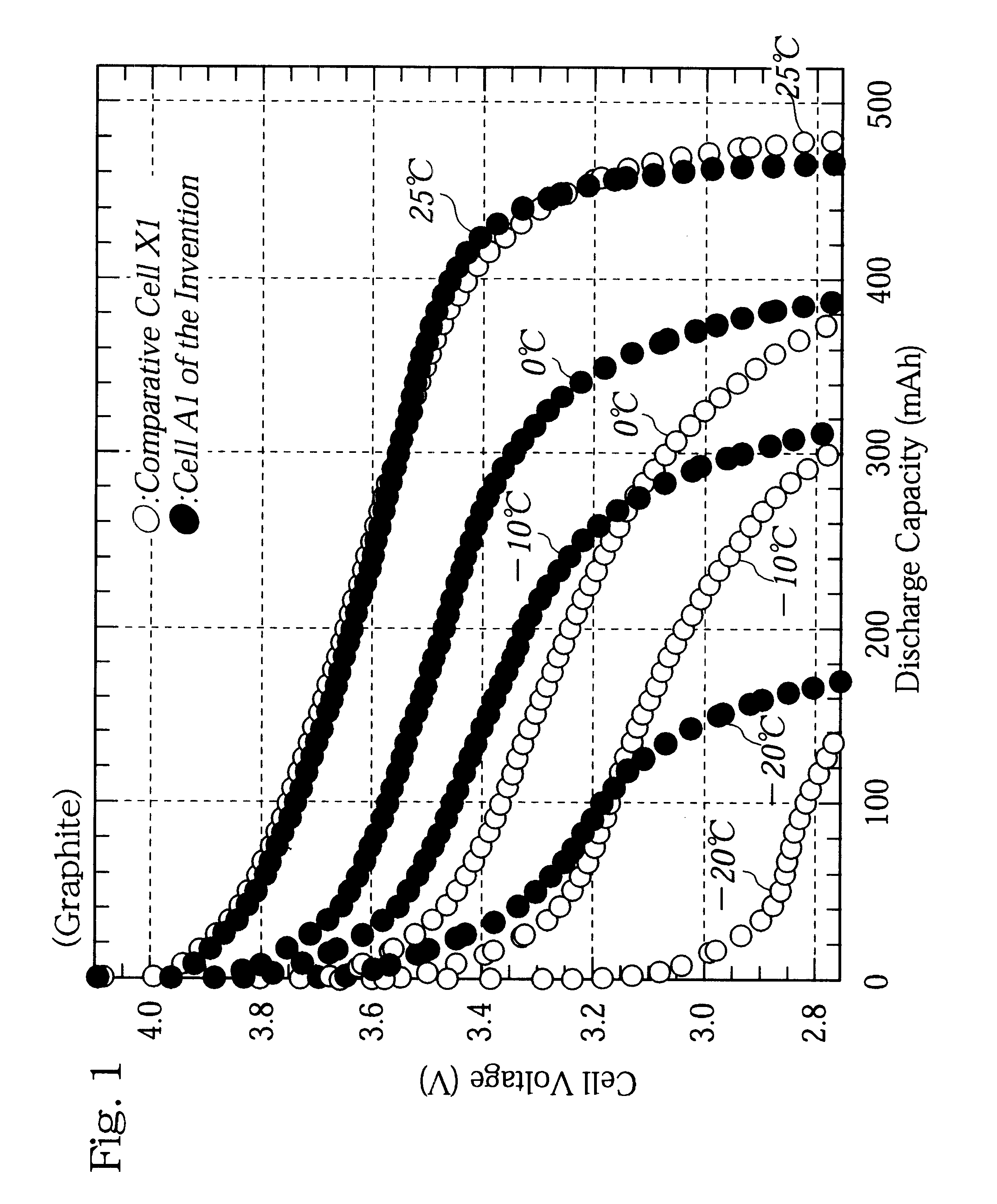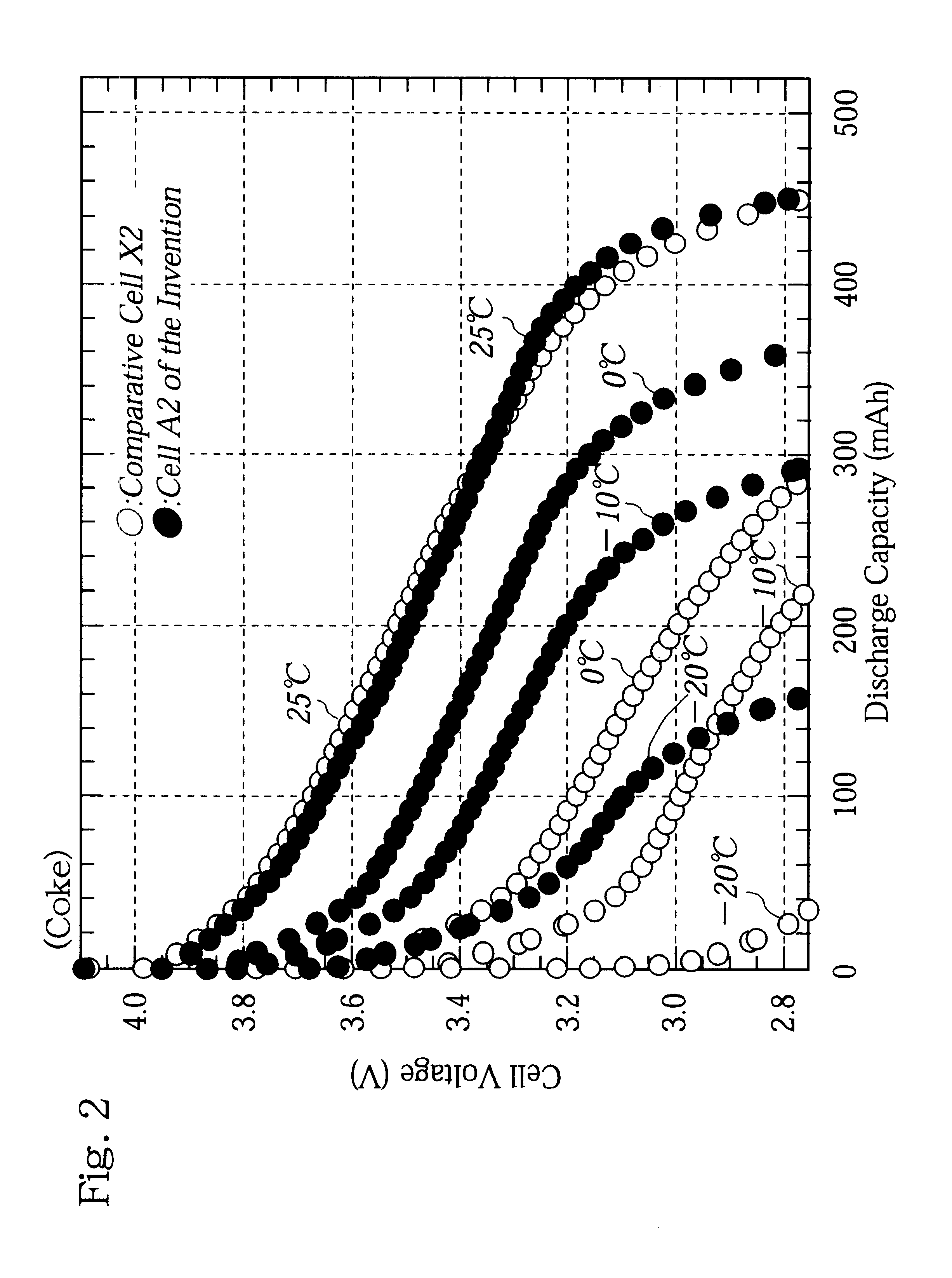Non-aqueous electrolyte cell having a positive electrode with Ti-attached LiCoO2
a positive electrode, non-aqueous electrolyte technology, applied in the direction of non-aqueous electrolyte cells, cell components, sustainable manufacturing/processing, etc., can solve the problem of deterioration in the capacity of absorbing and releasing lithium ions, deformation of the charge and discharge capacity, and deformation of the charge and discharge efficiency, so as to achieve the effect of reducing the amount of generated internal gas, reducing the amount of produced internal gas, and reducing the amount of reduced problem
- Summary
- Abstract
- Description
- Claims
- Application Information
AI Technical Summary
Benefits of technology
Problems solved by technology
Method used
Image
Examples
example 2
A cell A2 of Example 2 according to the present invention was prepared in the same manner as in Example 1, except that coke (interlayer distance d.sub.002 =3.40-3.45 .ANG.) was employed as a negative electrode active material in place of the graphite used in Example 1.
example 3
A cell A3 of Example 3 according to the present invention was prepared in the same manner as in Example 1, except that coke was employed as a negative electrode active material in place of the graphite used in Example 1, and that a mixed solvent of an equal volume of propylene carbonate (PC) and diethyl carbonate (DEC) was employed in place of the mixed solvent of an equal volume of ethylene carbonate (EC) and diethyl carbonate (DEC).
example 4-7
Cells A4 to A7 of Examples 4 to 7 according to the present invention were prepared in the same manner as in Example 1, except that the mole ratios x were set to be 0.00001, 0.0001, 0.02, and 0.03 respectively.
PUM
| Property | Measurement | Unit |
|---|---|---|
| particle diameter | aaaaa | aaaaa |
| particle diameter | aaaaa | aaaaa |
| mole ratio | aaaaa | aaaaa |
Abstract
Description
Claims
Application Information
 Login to View More
Login to View More - R&D
- Intellectual Property
- Life Sciences
- Materials
- Tech Scout
- Unparalleled Data Quality
- Higher Quality Content
- 60% Fewer Hallucinations
Browse by: Latest US Patents, China's latest patents, Technical Efficacy Thesaurus, Application Domain, Technology Topic, Popular Technical Reports.
© 2025 PatSnap. All rights reserved.Legal|Privacy policy|Modern Slavery Act Transparency Statement|Sitemap|About US| Contact US: help@patsnap.com



